
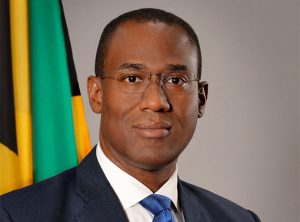
Minister of Finance and the Public Service
The Restructuring of Public Sector Compensation
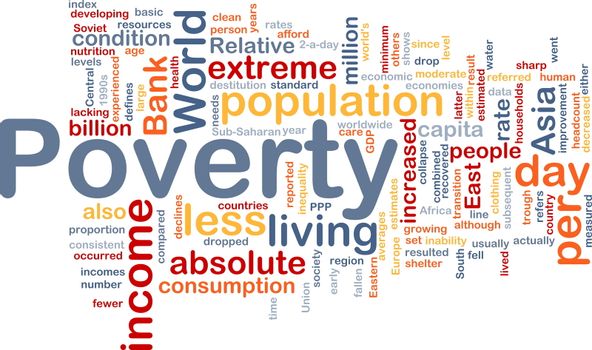
Poverty in the year 2017 declined in rural Jamaica, while increasing in Kingston and Other Towns – What accounts for this?
Opposition Spokesman on Finance Mark Golding took the release of the 2017 poverty data as an opportunity to make some wild and grand assertions that are not backed by data or any thoughtful analysis. His comments on the matter seemed to be more politically motivated and self-serving. A frank analysis of Jamaica’s challenges requires a more thoughtful approach that considers the underlying data.
The crux of the opposition spokesman’s assertion was that the increase in the poverty rate from 17.1 per cent in 2016 to 19.3 per cent in 2017 was due to the Government’s popular 2016 and 2017 increase in the income tax threshold to $1.5 million for all working Jamaicans, which was financed by increases in indirect taxation.
If Golding’s narrative were correct, we would have expected to see poverty rise uniformly across Jamaica in 2017 vs 2016. We would also expect that overall poverty should have increased in 2016 vs 2015, considering that the switch to indirect taxes began in May 2016. But neither of these happened.
How does Mr Golding reconcile the fact that rural poverty actually declined marginally in 2017 vs 2016 (from 20.5 per cent to 20.1 per cent), a factor he conveniently neglects to mention? The modest decline in rural poverty in 2017 is especially significant in light of the fact that the rural economy was badly affected by floods in 2017, which resulted in negative growth of -3.5 per cent for the agriculture subsector, a mainstay or livelihood in rural Jamaica.
Furthermore, the channel through which the switch from direct to indirect tax – which benefited three-quarters of Jamaica’s working population – would have been manifested through increased prices, i.e., higher inflation.
So, let’s examine the inflation data in 2017. Headline Consumer Price Index inflation was 5.2 per cent; however, core inflation – i.e., the inflation derived after stripping out volatile external factors and which more accurately reflects domestic policy changes – remained unchanged at around 2.5 per cent (as reported in the Bank of Jamaica 2017 inflation reports). Therefore, Mr Golding’s rant about “low-income wage-earners, unemployed, pensioners and micro business operators” being “made to bear these additional taxes” is not borne out by the data.
Moreover, any explanation of the 2017 poverty data has to take account of the fact that there was a 47 per cent increase in allocation to the PATH programme in 2017, a 58 per cent increase in allocation to school feeding and a 30 per cent increase in PATH conditional cash grants, also in 2017 (see the Hon Audley Shaw’s 2017 opening Budget presentation). This administration’s policies have consistently sought to protect the poorest and most vulnerable.
So why did poverty increase in 2017 vs 2016?
First of all, merely citing the data without the necessary context is meaningless. While the poverty rate increased in 2017, its general trend, when viewed from the perspective of a broader timeframe, is firmly downward. Specifically, the poverty rate for 2017 of 19.3 per cent, though higher than the 17.1 per cent in 2016, was lower than the 21.2 per cent in 2015, and significantly lower than the 2013 poverty rate of 24.6 per cent (which was the highest poverty rate since 1996).
A possible explanation of the 2017 poverty data lies in the distribution of remittances across various subgroups. Overall remittances to Jamaica increased only marginally in 2017 as compared with 2016 (higher by 0.6 per cent). However, in the Kingston metropolitan area, the proportion of households receiving remittances, in the two lowest consumption groups, declined by an appreciable amount in 2017 compared with 2016 – from 35 per cent of households to 29 per cent of households in the lowest consumption group, and from 46 per cent of households to 39 per cent of households in the second lowest consumption group, over the two years (Source: Jamaica Survey of Living Conditions 2017).
When contrasted against rural Jamaica, the proportion of Jamaicans in rural Jamaica receiving remittances, in the two lowest consumption groups, jumped from 38.6 per cent of households to 49.1 per cent of households in the lowest consumption group, and from 45.8 per cent of households to 46.9 per cent of households in the second-lowest consumption group, from 2016 to 2017, respectively (Source: Jamaica Survey of Living Conditions 2017).
Another potential explanation lies in the occurrence of a general election in 2016, which was accompanied by heavy spending by political candidates and parties, much of which would have been directed in areas associated with poverty. This would have affected consumption in 2016 skewing the poverty number in that year. While comparative data does not exist in the immediately preceding 2011 general election year due to the census that was taken, we see similar very large one-year drops in the poverty rate in other general election years. In 1993, (poverty declined from 33.8 per cent in 1994 to 24.4 per cent in 1993); in 1997, (poverty declined from 26.1 per cent in 1996 to 19.9 per cent in 1997); and in 2007, (poverty declined from 14.3 per cent in 2006 to 9.9 per cent in 2007). These observations support this possible explanation.
The switch to indirect taxation, combined with other tax administration reforms, has expanded the tax base and generated an unprecedented increase in tax revenues, affording Jamaica to focus spending on deep structural issues, including crime, infrastructure, and poverty. This is just the beginning, and the Holness administration is committed to furthering its efforts to increase social spending and improve the quality of life for all Jamaicans.
Simplistic and self-serving explanations of Jamaica’s long-standing challenges do not get us anywhere. Let us have an informed, fact-based conversation that serves the interest of the Jamaican people.
Published in the Gleaner – August 5, 2019
Dr Nigel Clarke is Minister of Finance and the Public Service and Member of Parliament for St Andrew Northwestern. Send feedback to opedjamaica@gmail.com.
The Hon. Nigel Clarke, D.Phil., MP
Minister of Finance and the Public Service
30 National Heroes Circle, Kingston 4
Tel: (876) 932-4656 / 4660 / 4655
Eml: opedjamaica@gmail.com

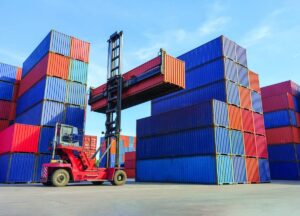
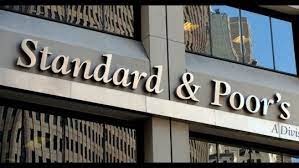

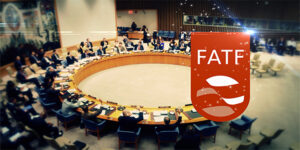
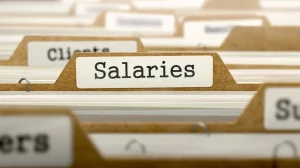

The Ministry of Finance and the Public Service (MOFPS) wishes to advise the public that approval has been granted for an extension in the relief of Import Duty and General Consumption Tax on imported donations and relief supplies to assist in recovery efforts following the passage of Hurricane Melissa.

The Ministry of Finance and the Public Service (MOFPS) wishes to advise the public that approval has been granted for an extension in the relief of Import Duty and General Consumption Tax on imported donations and relief supplies to assist in recovery efforts following the passage of Hurricane Melissa.

Standard and Poor’s (S&P) Global Ratings, today, September 25, 2025, upgraded Jamaica’s long-term foreign and local currency sovereign credit ratings from ‘BB-‘ to BB,’ while its outlook remains “Positive”.

I note with much regret the pre-dated media release of August 14, 2025 shared by the Jamaica Teachers’ Association (JTA) today (August 15, 2025). While it is disappointing that the members of the JTA’s leadership choose not to continue the discussions at today’s meeting that they demanded, the Ministry of Finance and the Public Service (MoFPS) remains committed to the matter of Wage and Fringe Benefits negotiations.
Stay in the know with everything going on at the Ministry of Finance and the Public Service by subscribing the MOFPS INSIDER magazine.
Stay in the know with everything going on at the Ministry of Finance and the Public Service.
Copyright © 2025 Ministry of Finance & the Public Service. All rights reserved.
Government of Jamaica